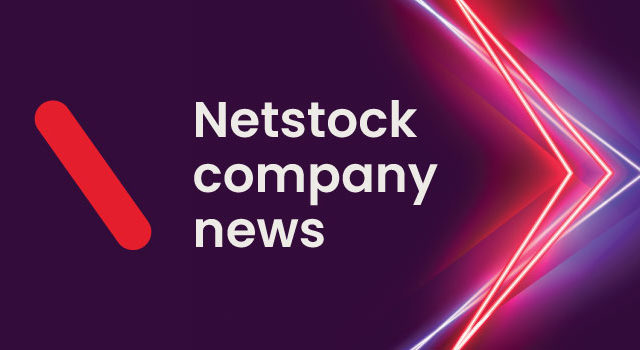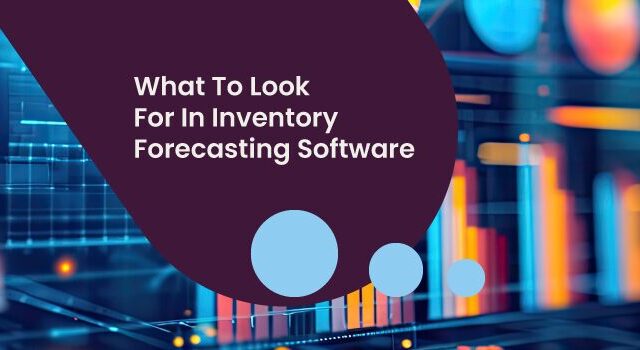Many small and medium-sized businesses struggle with inefficient supply chain operations, especially if they still manage their inventories manually. These businesses often use spreadsheets alongside ERP systems, which can contribute to stock-outs, excess inventory, and supplier management issues like long lead times.
Efficient inventory management relies on inventory analysis. This approach isn’t just about monitoring inventory; it’s about using sophisticated analysis to anticipate demand, streamline processes, and make better-informed decisions.
In this article, we’ll guide you through using the right inventory analysis techniques with the right technologies to optimize your supply chain operations, reduce costs, and drive business efficiency.
To begin, let’s first define the term and then explain its components and benefits.
Understanding Inventory Analysis
Inventory analysis is a process in supply chain management that involves interpreting data related to a company’s inventory levels, usage patterns, and storage costs.
The goal of inventory analysis is to help inventory planners make informed decisions about inventory management. This results in optimal stock levels that meet customer demand while minimizing unnecessary holding costs.
What are the components of inventory analysis?
Demand forecasting, inventory turnover rates, and stock level optimization are the key components of inventory analysis. Together, they provide a comprehensive view of a company’s inventory situation.
- Demand forecasting is about predicting future sales to determine the appropriate inventory levels.
- Inventory turnover rates measure how quickly a company sells and replaces its inventory. Inventory turnover indicates the efficiency of inventory management.
- Stock level optimization focuses on maintaining the ideal amount of inventory to meet demand without overstocking or understocking.
What are the benefits of inventory analysis?
The biggest benefits of inventory analysis include enhanced visibility of inventory levels, improved forecasting accuracy, and reduced carrying costs.
Let’s examine how each benefit affects the supply chain.
| BENEFITS OF INVENTORY ANALYSIS | ||
|---|---|---|
| Enhanced visibility – identifies potential issues before they become critical | Improved forecasting accuracy – reduces the likelihood of errors in the forecasting process | Reduced Carrying Costs – lowers storage costs and reduces the risk of obsolescence and waste |
Enhanced visibility into inventory levels
Inventory analysis gives you a clear understanding of inventory dynamics. You get real-time data and insights into stock availability, movement, and trends. The visibility allows businesses to monitor inventory status accurately, identify potential issues in advance, and make timely decisions to optimize stock levels.
The Netstock dashboard is hands down my favorite feature. It allows my team to quickly prioritize their day. I always say to the team, focus on the top 5 and leave the rest for tomorrow! With the dashboard, we quickly pinpoint the most crucial action to take – T2
Improved forecasting accuracy
Effective inventory analysis enhances forecasting accuracy by leveraging historical data and predictive analytics to anticipate future demand. Understanding patterns and trends is key to accurate forecasting, and having accurate data and insights into inventory turnover rates reduces the likelihood of errors in the forecasting process.
Improved forecast accuracy is just one of the many benefits of demand optimization & planning software. We’ll talk more about inventory analysis and technology later on.
Reduced carrying costs
When you accurately assess demand and adjust inventory accordingly, you reduce the capital tied up in unsold stock. This approach lowers storage costs and decreases the risk of obsolescence and waste.
Techniques for effective inventory management
The key techniques for effective inventory management are Just-in-Time (JIT) inventory, ABC analysis, safety stock optimization, and Vendor-Managed Inventory (VMI).
Just-in-Time (JIT) Inventory
Just-in-time inventory is a strategy that aligns raw-material orders from suppliers directly with production schedules. JTI relies on receiving goods only when they are needed in the production process, so that storage costs and waste are reduced significantly. .
JIT inventory is particularly beneficial for supply chains that operate in industries where minimizing waste and optimizing cash flow are critical, such as large-scale manufacturing.
ABC Analysis
ABC Analysis categorizes inventory into three categories—A, B, and C—based on their importance. ‘A’ items are the most valuable, though they may be fewer in number, while ‘C’ items are the least valuable but may be more abundant.
This classification helps you focus your resources on the most critical items that impact your business most. ABC Analysis is ideal for supply chains managing a wide variety of inventory items with different levels of importance, making it particularly useful for retail and distribution businesses.
If you manage a large number of SKUs, you might want to check out our detailed guide on how to create an effective ABC analysis.
Safety Stock Optimization
The goal of safety stock optimization is to have a buffer stock that prevents stock-outs due to unforeseen demand spikes or supply chain delays.
This technique is crucial for supply chains that experience high demand variability or long lead times, such as those in the pharmaceutical or consumer goods industries.
If we want 120 days of forecast on our shelf, Netstock lets us do that easily. If we have limitations in capacity, the planners can see that right away and adjust the safety stocks downward, reducing the order across all sizes. It helps us to balance sales, financial, operational, and service requirements. – Edwards Garment
Vendor-Managed Inventory (VMI)
Vendor-managed inventory (VMI) is a collaborative approach in which the supplier takes responsibility for managing inventory levels. VMI improves inventory accuracy, reduces holding costs, and fosters a stronger partnership between businesses and suppliers, enhancing overall supply chain efficiency.
This technique is particularly beneficial for supply chains with strong supplier relationships that require accurate inventory management, such as those in the food and beverage or healthcare sectors.
Leveraging technology in inventory analysis
Inventory management software, Artificial Intelligence (AI), the Internet of Things (IoT), and predictive analytics revolutionized inventory management and analysis. These tools provide real-time insights and predictive capabilities, allowing more informed decision-making and streamlined operations.
Inventory Management Software
Modern inventory management software is crucial for monitoring and managing inventory in real time. It provides up-to-date data on stock levels, enables planners and managers to make informed decisions quickly, and automates routine tasks.
Businesses that use inventory management software have comprehensive visibility and enhanced ability to respond to changes in demand and supply.
We reduced our excess by over 30% while maintaining a robust 95% fill rate. The key to this turnaround was about having data visibility, leading to forecast accuracy, streamlined operations, and strategic sales initiatives. – Adventure Operations
AI and IoT
AI algorithms can analyze vast amounts of data to predict trends and suggest inventory-level optimizations. IoT devices provide real-time inventory tracking and monitoring across the supply chain. These technologies enable you to anticipate demand shifts and proactively adjust your inventory strategies.
Predictive Analytics
Predictive analytics tools analyze historical data and identify patterns. This data helps you anticipate future demand and adjust your inventory accordingly.
In the next section, we’ll return to common challenges of inventory management and how to solve them.
Overcoming common challenges in inventory management
The common challenges of inventory managers and demand planners are visibility issues, demand variability, and supplier reliability.
| CHALLENGE | HOW TO SOLVE IT? |
|---|---|
| Visibility Issues | Implement advanced inventory management software |
| Demand Variability | Leverage demand forecasting software and predictive analytics |
| Supplier Reliability | Establish strong communication channels, set clear expectations, and regularly evaluate supplier performance |
Visibility issues
The lack of visibility across the supply chain is a huge challenge for inventory planners. This lack of data contributes to inefficiencies and disruptions, as businesses need help tracking inventory levels and movement accurately. To address these visibility issues, implement advanced inventory management software that has easy-to-use dashboards (like Netstock) to gain real-time insights and comprehensive visibility.
Demand variability
Fluctuations in demand can pose significant challenges in maintaining optimal inventory levels.
Demand planners must employ demand forecasting techniques and predictive analytics to manage these fluctuations. With historical data and up-to-date market trends, you’re well-equipped to anticipate demand changes and adjust your inventory levels accordingly.
Supplier reliability
Reliable supplier networks are vital for maintaining a smooth supply chain. Unreliable suppliers can lead to delays and inventory shortages, affecting your ability to meet customer demand. To improve supplier performance, establish strong communication channels, set clear expectations, measure and monitor supplier performance.
Let’s discuss healthy practices that will help you continuously improve your inventory management.
Best practices for continuous improvement
To improve inventory management, focus on conducting regular audits, continuously monitoring the inventory levels, fostering collaboration with suppliers, and adopting agile planning processes.
Here’s a detailed breakdown of each practice:
Regular audits
Conduct regular inventory audits and reviews to maintain accuracy and efficiency. These audits help identify discrepancies, ensure data integrity, and provide insights into areas that need improvement.
Continuous monitoring
For effective inventory management, ongoing monitoring of inventory levels and performance metrics is crucial. Monitor key performance indicators (KPIs) closely to quickly identify trends, spot potential issues, and adjust your strategies accordingly.
As you monitor your inventory, collaboration with suppliers becomes vital to your strategy.
Collaboration with suppliers
Build strong relationships and collaborate with suppliers to significantly enhance your inventory management. Working closely with suppliers can improve inventory accuracy, reduce lead times, and lower holding costs. Effective collaboration ensures that both parties are aligned and can respond quickly to changes in demand or supply.
Agile planning
Implement flexible and responsive planning processes to adapt to changing market conditions. Agile planning lets you quickly adjust your inventory strategies based on real-time data and evolving customer needs. This adaptability helps you stay competitive and meet customer expectations efficiently.
Maximizing efficiency with inventory analysis
Modern supply chains require modern inventory analysis and demand forecasting solutions. An accurate inventory analysis can improve your supply chain operations. By implementing best practices such as regular audits, continuous monitoring, and strong supplier collaborations, you can maintain optimal inventory levels and swiftly adapt to market changes.
By investing in advanced demand and supply planning solutions, you’ll enhance your ability to forecast demand accurately and reduce carrying costs, ultimately optimizing your supply chain operations.



